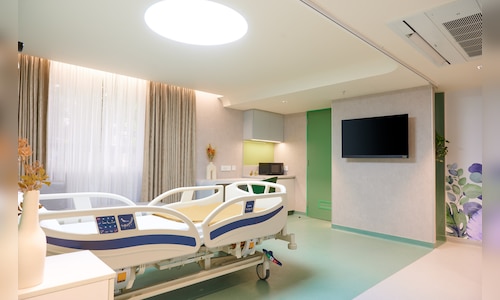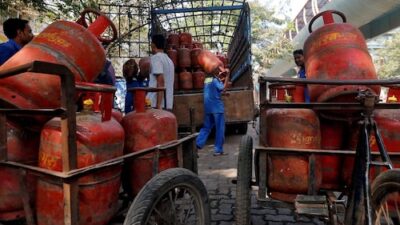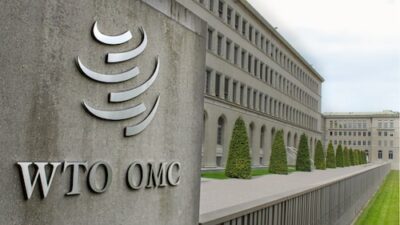In an interview with CNBC-TV18, BS Ajaikumar, Executive Chairman of HCG, stated, “We anticipate that the new or emerging centers will catch up, and we expect our margins to be in the low 20s this year. We aim for at least a 20% margin in FY26.”
The company’s urban locations are contributing to high ARPOB (average revenue per occupied bed), approaching ₹1 lakh in both Ahmedabad and Bangalore. Mumbai operations have also seen positive trends, particularly from the South Mumbai centre, which recorded over 40% growth, while Borivali has turned profitable with EBITDA margins exceeding 20%. “We see significant growth potential in Mumbai,” Ajaikumar remarked, noting the establishment of outpatient infusion centers in the area as part of a hub-and-spoke model.
Although overall bed occupancy may remain unchanged, HCG’s ARPOB is steadily increasing. According to Ajaikumar, the ARPOB currently stands at around ₹45,000, with annual growth of 3.5–4%. The company plans to add nearly 900 beds this year, mainly driven by daycare treatments and outpatient services, which now constitute 65–70% of total sales.
“Most chemotherapy is administered as day treatments. Radiation involves all-day therapy. Only surgeries and patients hospitalized due to complications require longer stays,” Ajaikumar pointed out, highlighting HCG’s shift toward outpatient-focused care as part of its long-term vision.
Regarding competition in Mumbai from new entrants like Adani Healthcare, Ajaikumar emphasized that HCG’s strength lies in being a specialized oncology center. “Outcomes are optimal when patients go to dedicated oncology facilities,” he stated, noting that HCG continues to experience increased patient visits, referrals, and requests for second opinions due to its specialization.
On the ownership side, Ajaikumar confirmed that KKR’s acquisition is underway and should conclude in the coming weeks. He clarified that his personal stake remains unchanged, with formal announcements to follow once the transition is completed.
Below is the verbatim transcript of the interview.
Q: I’d like to begin by discussing the ARPOB, which has risen by 3.5%. However, bed occupancies fell by about 200 basis points in the March quarter (Q4FY25). Is this a result of a decreased average length of stay, or are your outpatient solutions increasing? Could you clarify this?
Ajaikumar: Looking ahead in oncology, we expect the average length of stay to decrease. At HCG, we take pride in the fact that the average length of stay is shortening, with most treatments transitioning to outpatient care. We tend to focus on footfall and growth, which we anticipate will continue. While we add new beds in various regions, our bed capacity will increase, but occupancy may stay stable or see minimal growth. Moving forward, the majority of treatments will occur on an outpatient basis, which is beneficial for patients and enhances efficiency within the system.
Q: Are you suggesting that occupancy will either stay the same or decline a bit? How does chemo and LINAC utilization relate to your sales? What portion of your revenue comes from outpatient services? With potential reductions in occupancy, wouldn’t outpatient revenue rise? What’s the current contribution?
Ajaikumar: The contribution from outpatient services is substantial, likely around 65–70%. Even for chemotherapy, most treatments are day therapies. Radiation is also an all-day service. It’s primarily surgeries and patients admitted due to complications that require longer stays. We pride ourselves on having a low complication rate at HCG.
In oncology, emphasizing outpatient care, day chemotherapy, and same-day surgeries is crucial. For instance, in our robotic surgeries, patients can return home within three to four days. This is part of our commitment to enhancing quality of care. When assessing outcomes, we take pride in these achievements.
Moving forward, we plan to expand our bed capacity by nearly 900 beds this year, due to new centers and expansions. However, our occupancy rates are not expected to significantly rise.
Q: Can you provide insights on your specific regional performances, particularly Borivali and South Mumbai, where you have operations? How are occupancy rates, ARPOB growth, and overall performance in these centers?
Ajaikumar: South Mumbai and Borivali have performed exceptionally well this year, particularly this quarter. Notably, South Mumbai, which faced challenges previously, has seen over 40% growth. Borivali is also profitable, and its EBITDA margin has improved to over 20%. These are some of the positive developments. We recognize tremendous growth potential in Mumbai, having implemented various measures that affirm our strong position since our entry into the market. We are establishing outpatient infusion centers as part of a hub-and-spoke distribution model. Our ARPOB in Mumbai exceeds ₹70,000.
Q: Overall, what ARPOB and margin guidance, along with revenue forecasts, can you provide for FY26? Given your comments on stable or slightly declining occupancy, how does this affect your overall performance?
Ajaikumar: While occupancy may not decline significantly, it may not grow either. Our ARPOB, however, shows a growth rate of 3.5–4%. Currently, it is about ₹45,000 and expected to continue growing. In urban regions, our ARPOB has seen considerable improvement, nearing ₹1 lakh in cities like Ahmedabad and Bangalore. This trend will likely continue, supported by healthy margins. Established centers maintain margins over 25%. We believe emerging centers will catch up, and we expect margins to be in the low 20s this year, with hopes of achieving at least a 20% margin in FY26.
Q: I’m inquiring about your Mumbai market performance due to rising competition in the area. With new hospitals opening in Thane and Adani Healthcare launching a facility in Kandivali, how are you planning to tackle this competition? What is your perspective?
Ajaikumar: Our HCG model was initiated as a focused, specialty-driven entity. It’s evident that we are recognized as a premier destination for oncology care. As an oncologist, I can confidently affirm that the best outcomes occur when patients visit dedicated oncology centers. Consequently, our patient referrals and visits continue to rise, even with multi-specialty hospitals developing their own oncology departments. We are optimistic about our growth strategy, especially in Borivali, where we see significant upward potential. Given the dense population and the specific cancers we treat, we are positioned as a destination center. Many of our cancer patients seek us for comprehensive evaluations, second opinions, and many are relapse cases. Increased awareness of cancer is leading to a notable rise in patient numbers in urban locales, and our growth strategy remains firmly in place.
Q: With KKR now in a leadership role, can you discuss any potential synergies or integration? CVC still holds a stake; any plans for monetization or their remaining stake?
Ajaikumar: I will maintain my current stake, and there will be no changes in that regard. As for KKR, we have announced the transition, which is expected to conclude within weeks. We will make the necessary announcements once the process is finalized.



